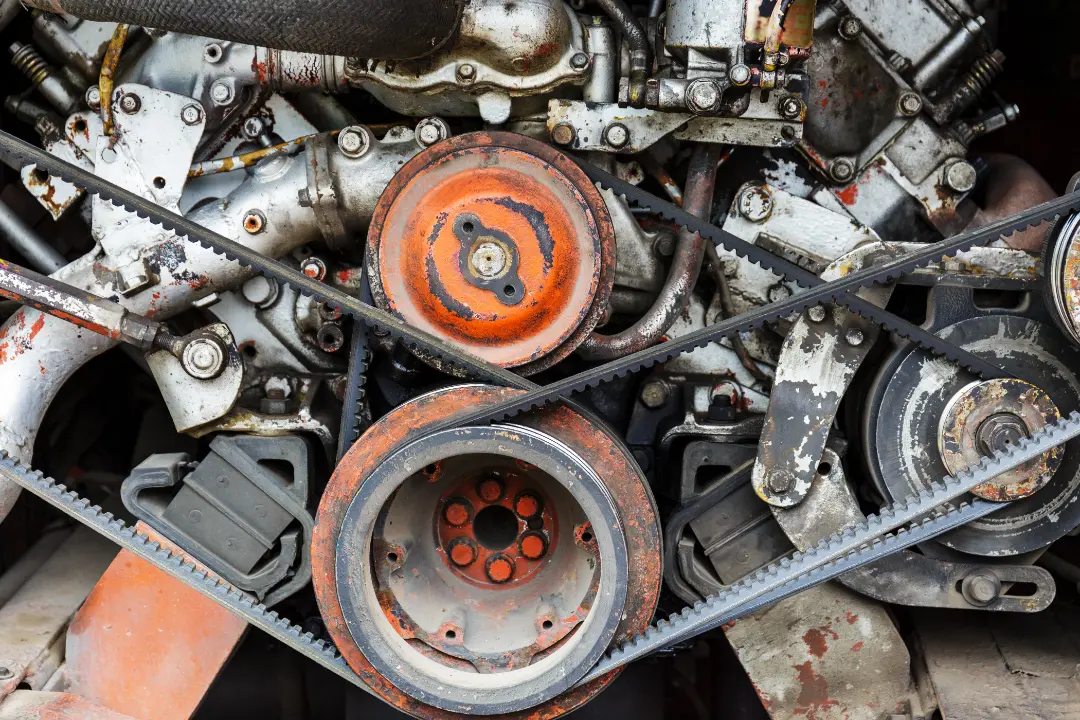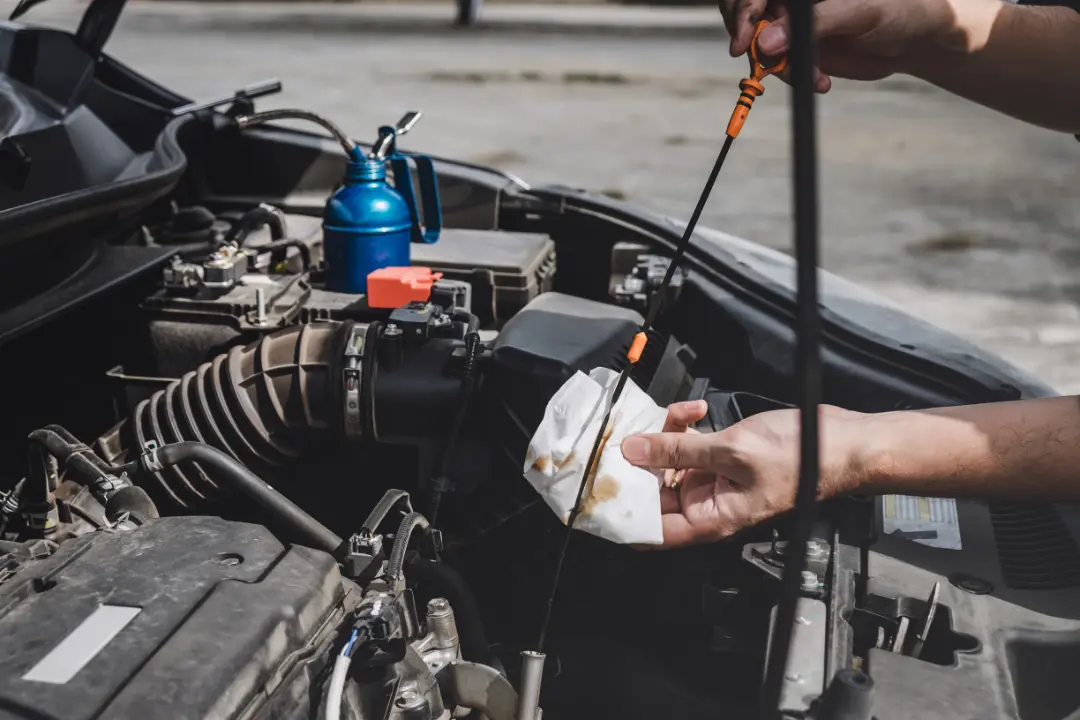Wondering when to replace a clutch? Knowing the right time can save you from unexpected breakdowns and costly repairs. In this guide, we’ll walk you through the key indicators that signal it’s time for a clutch replacement and what to expect during the process.
Key Takeaways
- A slipping clutch can identify a worn clutch, difficulty shifting gears, and unusual noises, signalling the need for immediate attention to prevent further damage.
- Regular maintenance and proper driving habits can extend the lifespan of your clutch, such as avoiding riding the clutch and using smooth gear-shifting techniques.
- Ignoring clutch issues can lead to costly repairs, including potential transmission damage, and pose significant safety risks during driving.
Understanding the Role of a Clutch
The clutch, a master of connection and disconnection, plays a pivotal role in your vehicle’s ability to move and change gears. When you press the clutch pedal, you’re engaging a system that allows you to transition between gears without grinding or jerking smoothly. As you release the pedal, the power flows from the engine to the transmission, giving you control and a smooth ride. This precise control over power transfer makes the clutch essential for starting your vehicle from a standstill and providing a comfortable driving experience.
This mechanical marvel comprises several key components: the clutch pedal, clutch disc, clutch plate, and clutch pressure plate. Together, they work to manage the force and friction that come with powering your vehicle. When the clutch disc and plate come into contact, they create friction, allowing power transfer. Over time, this friction causes wear on the pressure plate and, ultimately, the need for a clutch replacement. As drivers, understanding the clutch’s role, including the hydraulic clutch system, is the first step in recognising when it may need a little TLC, such as when experiencing a spongy clutch pedal.
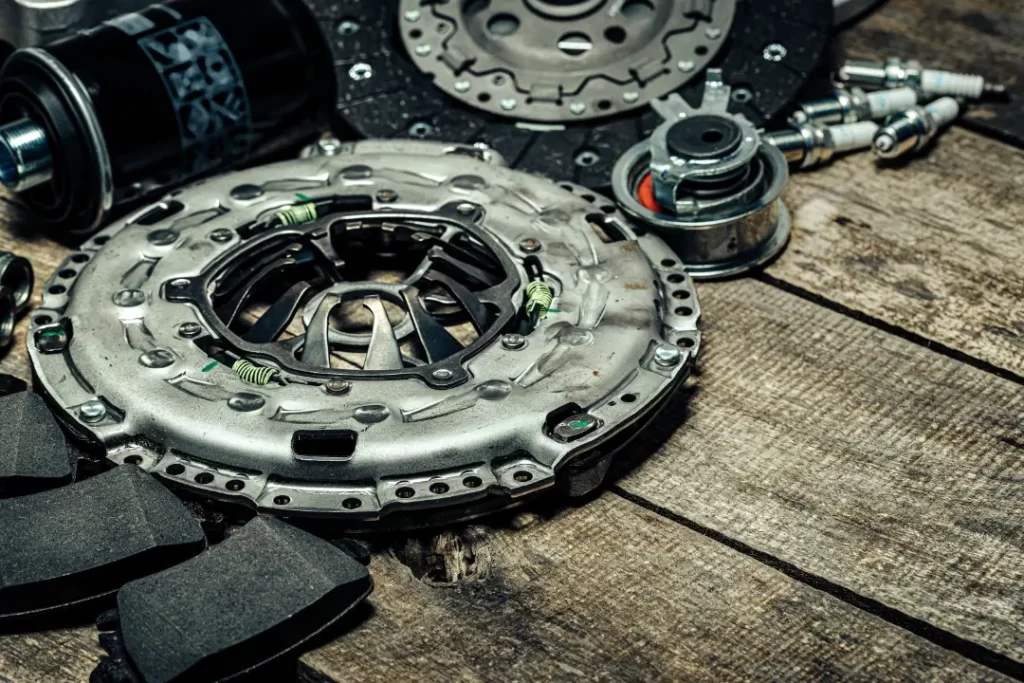
Key Indicators Your Clutch Needs Replacing
Imagine you’re on the open road, and suddenly, your car doesn’t respond as it once did. It’s a telltale sign that your clutch may be waving a white flag. But how can you be sure? The signs are there if you know what to look for: a clutch that slips, difficulty with gear changes, and unusual noises that weren’t there before.
Let’s explore these indicators so you can identify them before they evolve into a more serious automotive performance.
Slipping Clutch
Picture this: you’re accelerating, but your car is lagging behind the engine’s revs. This frustrating disconnect is often the result of a slipping clutch. The culprit? The worn-out friction material on the clutch disc prevents proper engagement. You might feel like you’re stepping on the gas, but your vehicle simply doesn’t pick up the pace. It’s like trying to run on ice – no matter how fast your legs move, you’re not getting anywhere fast.
A slipping clutch dampens your driving experience and signals that your clutch components, including a loose clutch pedal, are crying out for attention. Ignoring this warning can lead to a complete loss of power transfer, making your car as useful as a sailboat without wind. It’s a momentary loss of control that, if left unchecked, can become a permanent setback, requiring a full clutch system replacement.
Difficulty Shifting Gears
Shifting gears should feel as natural as breathing – smooth and effortless. But if you’re met with resistance and a soundtrack of grinding noises, or if your clutch pedal feels soft, there’s likely a worn clutch to blame. This difficulty can come in the form of a stiff, uncooperative gear stick that seems to have a mind of its own. It’s the mechanical equivalent of forcing a square peg into a round hole; something’s just not right. It’s time to change gear and address the issue before it worsens.
The grind you hear is the sound of your transmission’s input shaft still spinning, even though you’ve fully depressed the clutch pedal. When the clutch disc hasn’t fully disengaged from the flywheel, the gears clash rather than slide into place. This issue not only makes for an unpleasant driving experience but also spells trouble for your transmission, leading to expensive repairs down the line if not addressed promptly.
Unusual Noises
Your car often speaks to you through its sounds; when it comes to the clutch, you should listen closely for the unusual. A healthy clutch system is relatively silent, but you may hear grinding, rattling, or squeaking noises when things go awry. These strange symphonies occur when engaging or disengaging the clutch and are telltale signs that not all is well with the clutch’s components.
Think of it as your vehicle’s cry for help, warning that the release bearing or other clutch system parts may fail. Disregarding these sounds can turn a small issue into a significant, costly problem. To keep your car’s performance pitch-perfect, you must heed these warning signs and seek professional clutch repairs before they crescendo into a full-blown clutch failure.
How Clutch Wear Affects Performance
As the clutch begins to wear, its performance starts to wane. A worn clutch means less efficient power transfer, leading to that dreaded slippage we discussed earlier. This lack of grip between the clutch disc and the flywheel means your engine may rev, but the acceleration doesn’t follow suit. You’ll notice it most when trying to overtake or climb hills – moments when you need your car to respond enthusiastically, but it seems to hesitate.
This reduction in performance isn’t just an annoyance; it’s also a drain on fuel efficiency. When your clutch slips, your engine works harder to compensate for the loss of direct power transfer, burning more fuel in the process. Ultimately, what begins as a minor annoyance can lead to a significant dip in your car’s overall performance and efficiency. Addressing clutch wear early is crucial to keeping your vehicle at its best.
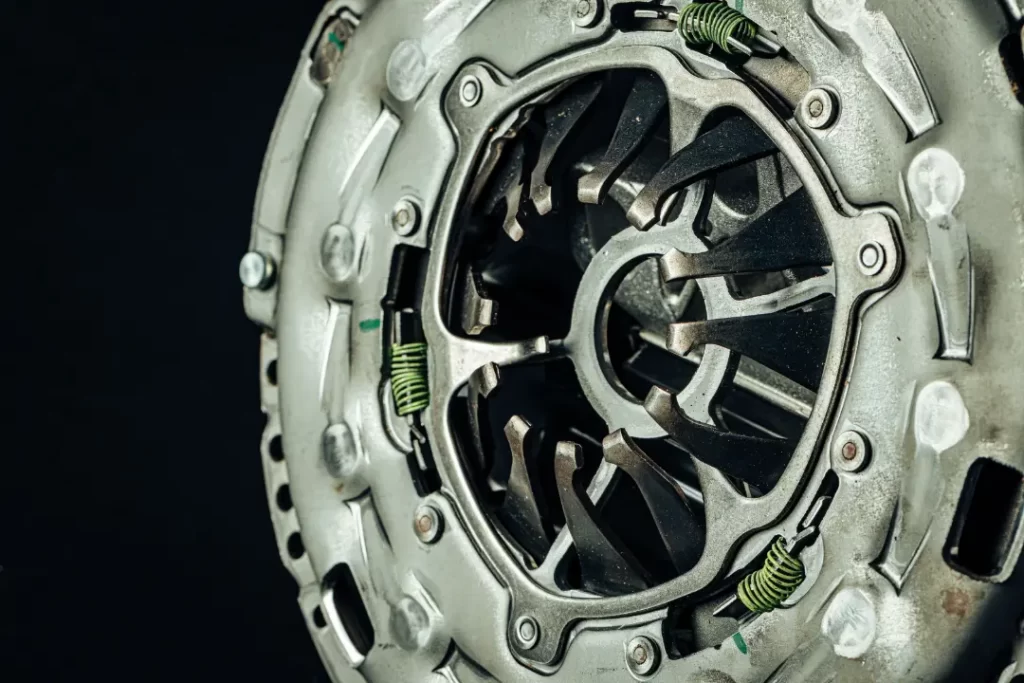
Consequences of Ignoring Clutch Issues
Turn a blind eye to clutch issues and set yourself up for a domino effect of automotive woes. When the clutch begins to fail, it doesn’t go down alone; it can take other transmission components with it. This ripple effect means that what could have been a simple clutch repair can spiral into a costly transmission overhaul. It’s akin to ignoring a leaky faucet and then ending up with a flooded bathroom.
And if you push a failing clutch too far, you risk being stranded with a vehicle that refuses to move. It’s not just about inconvenience; it’s a safety risk. In the heat of traffic, the ability to accelerate quickly can mean the difference between a close call and a collision. By addressing clutch issues as soon as they arise, you safeguard your car’s performance, safety, and wallet.
Factors Influencing Clutch Lifespan
The life of your clutch is not set in stone; it’s shaped by the way you drive and the conditions you drive in. Frequent stop-and-go traffic and aggressive driving styles increase the stress on your clutch, accelerating wear and shortening its lifespan. Similarly, if you often find yourself towing heavy loads, your clutch bears the brunt of that extra weight, further reducing its life.
But it’s not all doom and gloom. Regular maintenance and driving with a gentle touch can help your clutch live a long and healthy life. By adhering to your vehicle manufacturer’s servicing schedule and keeping an eye on your driving habits, you can actively extend your clutch’s lifespan, which can range anywhere from 30,000 to 100,000 miles.
What to Expect During Clutch Replacement
When the time comes for a clutch replacement, brace yourself for a significant undertaking. It’s a process that involves:
- Removing the transmission to access the clutch itself – a labour-intensive task that contributes to the cost
- Raising the front end of the car
- Stabilising the engine and transmission
- Disconnecting various cables and electrical connections
This surgery on your car can be quite involved, so it’s important to be prepared for the time and effort it will take.
After removing the old clutch, the heart of the procedure lies in correctly installing the new clutch components, which includes using an alignment tool to position the clutch disc and ensuring all parts are reconnected accurately. While cutting corners to save on expenses might be tempting, remember that a well-executed clutch replacement can restore your vehicle’s performance to its former glory and is worth the investment.
Cost of Clutch Replacement
The price of replacing a clutch can be as unpredictable as the British weather, varying greatly depending on several factors. On average, you’re looking at a range between £400 and £900, but don’t be surprised if the numbers climb higher for luxury models or if additional parts need to be addressed. For example, if you’re driving around in an Audi, you might find the costs hovering around £720 to £800, while MINI owners could see a bill from £640 to £1,400.
Labour costs are a hefty slice of the pie, typically falling between £300 to £500. Then there’s the clutch kit itself, which can cost around £300 to £350. And let’s not forget about the little extras like oil, fluids, and small parts, which can add up to an extra £20 to £100. It’s a wide spectrum, influenced by the nature of the issue and the car model you’re driving, so it’s always a good idea to get a full quote upfront.
Tips for Extending Clutch Life
Wouldn’t it be great to stretch the life of your clutch and avoid frequent replacements? The good news is that it’s possible with some care and the right driving habits. From the way you engage the clutch pedal to the gears you choose on inclines, every little action you take can contribute to a longer-lasting clutch.
Let’s explore some practical tips for keeping your clutch in top shape for as long as possible.
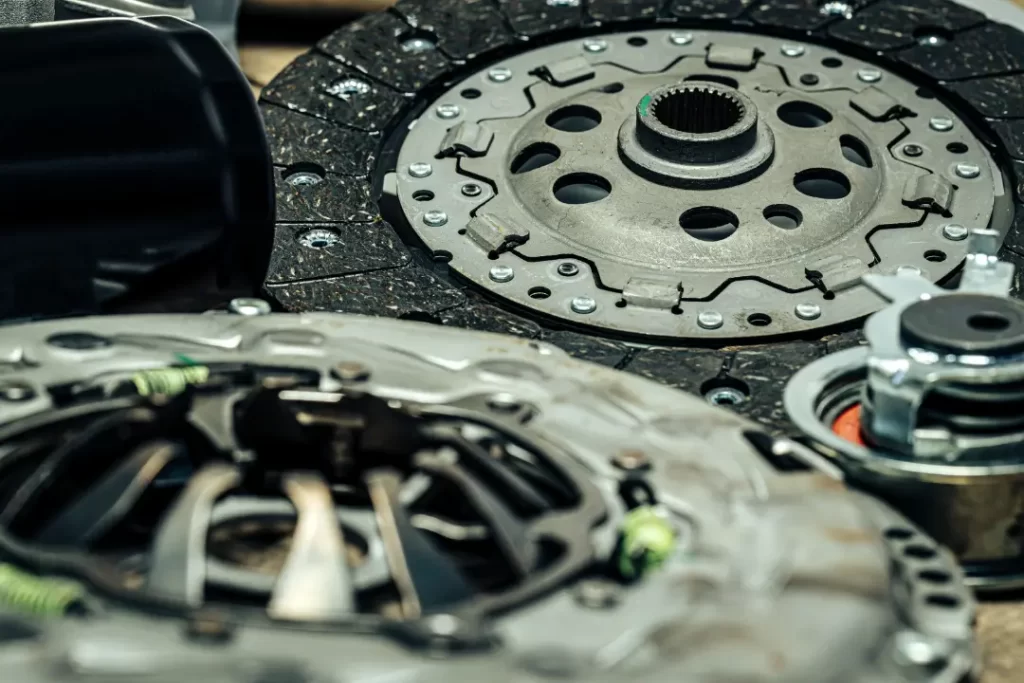
Avoid Riding the Clutch
One of the cardinal sins of driving is resting your foot on the clutch pedal, a habit known as ‘riding the clutch’. This seemingly innocent action keeps the clutch partially engaged, causing unnecessary wear and tear over time. It’s like leaving a tap running – it might not seem like a big deal, but it adds up.
To prevent this, ensure you’re seated comfortably from the pedals, allowing your leg to extend when the clutch is pressed fully. Proper seating helps you avoid riding the clutch and gives you better control over your vehicle, making for a smoother and more efficient drive.
Proper Gear Shifting Techniques
How you handle the gears can also influence your clutch’s longevity. Engage the clutch pedal smoothly and decisively when shifting to prevent jerking and unnecessary strain on the system. Like a skilled dancer, your footwork should be precise and deliberate, ensuring a seamless transition from one gear to the next.
Avoiding abrupt and forceful gear changes reduces the risk of damaging the clutch components. It’s a simple yet effective way to maintain the health of your car’s clutch and keep your rides smooth and trouble-free.
Regular Maintenance Checks
Regular check-ups are the bread and butter of clutch longevity. Skipping scheduled services can lead to unnoticed issues that could amplify clutch wear. By maintaining proper fluid levels and ensuring the clutch pedal is adequately adjusted, you set a solid foundation for a durable clutch system.
Adjusting the clutch cable tension is another step that can help preserve your clutch. Think of it as fine-tuning an instrument—it might not need a full overhaul, but a little tweak here and there can keep the music playing sweetly for longer.
AVS: Your Trusted Partner for Clutch Repairs
When it comes to clutch repairs, you want a service provider that hits all the right notes. Enter All Vehicle Services (AVS), your trusted partner with over 50 years of combined experience in the automotive industry. Based in Sittingbourne, Kent, AVS stands tall with a commitment to affordability, transparency, and customer satisfaction.
Choosing AVS means you’re opting for:
- Expert technicians who use state-of-the-art technology and techniques to diagnose and repair your clutch issues
- A no-obligation clutch inspection, taking the guesswork out of the equation and offering you a clear and honest assessment of what your clutch needs
- A convenient collection service where they’ll come to you if you can’t make it to them
Summary
Through our journey, we’ve uncovered the intricate dance of the clutch system, the signs of wear and tear, and the importance of timely repairs and maintenance. By staying vigilant and attending to your clutch’s needs, you can enjoy a smoother ride and save money in the long run. Remember that with skilled professionals like AVS by your side; your clutch can continue to perform at its peak, translating into a driving experience that’s nothing short of harmonious.
Frequently Asked Questions
How do I know if my clutch is slipping?
If you notice your engine revving but your car isn’t accelerating as it should, it could be a sign of a slipping clutch. This issue indicates that the clutch components are not engaging properly, leading to decreased wheel power transfer.
What causes the grinding noise when I shift gears?
When shifting gears, the grinding noise is typically caused by the clutch disc not fully disengaging from the flywheel. This problem leads to the transmission’s input shaft spinning, causing the gears to grind instead of slotting smoothly into place.
Can driving habits really affect my clutch’s lifespan?
Aggressive driving and frequent stop-and-go traffic can significantly reduce your clutch’s lifespan by causing extra stress and quicker wear on its components. So, it’s important to drive carefully to preserve your clutch.
Is it worth inspecting my clutch even if I’m not experiencing any issues?
Yes, inspecting your clutch is worth it, even if you’re not experiencing any issues. Regular inspections can catch potential problems early, saving you from more extensive and expensive repairs later on.
Why is clutch replacement generally more expensive for front-wheel-drive vehicles?
Clutch replacement for front-wheel-drive vehicles is generally more expensive because accessing the clutch in these vehicles is more complex, requiring higher labour costs due to the transverse positioning of the engine and transmission.

